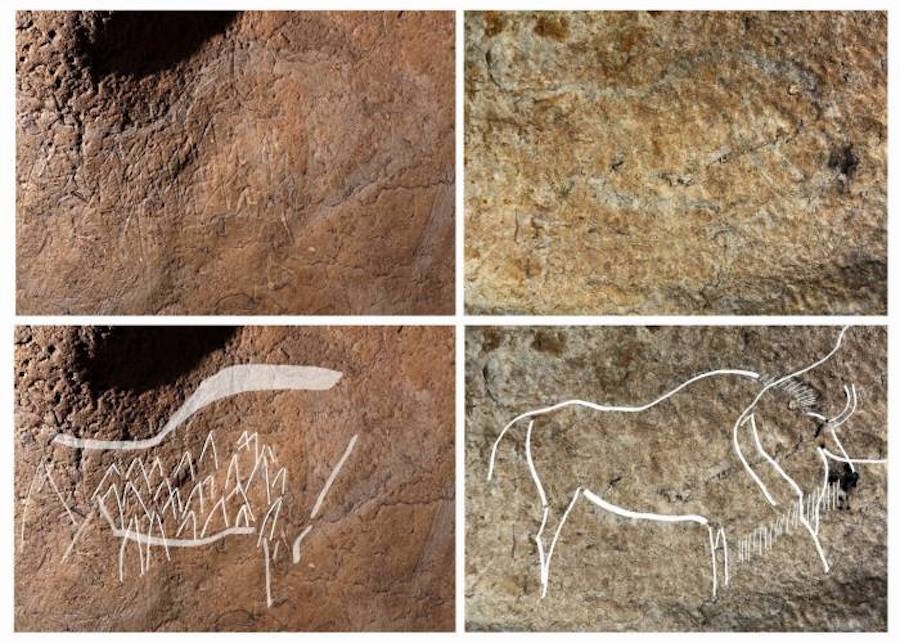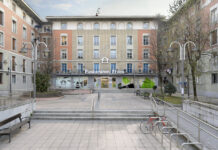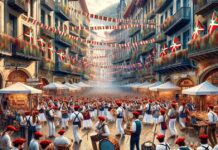This article was translated by John R. Bopp
All who’ve read Jean M. Auel’s The Clan of the Cave Bear have discovered the magic and profound significance hidden behind the paintings that illuminate certain caves around the world. To be able to describe their works, which still survive more than twelve millennia later, seems to belong more to the realm of fantasy than of science.
And that’s what happened this week in Biscay. A group of researchers has found, in a cave in Atxurra, in Berriatua, an extraordinary collection of cave art, works which were engraved in the stone and then painted, still preserved on the walls of the cave, which had previously been discovered by Father José Miguel de Barandiaran.
The project, sponsored by the Biscay government, was carried out by a team of archeologists led by Diego Garate, and has borne fruit no one expected. It’s the kind of surprise any student of prehistory would consider a dream come true, as Joseba Rios-Garaizar, a member of the team that made the discovery, said.

The news has spread around the world, from the East Asia to South America. The discovery of works by these prehistoric artists, undoubtedly related to other people who populated this part of Europe that we now call the land of the Basques and who created their own extraordinary art, like a map etching on a stone, has caused huge interest.
But even with all this, we get the impression that these works of art are going to be the most attention-grabbing, but not most important, part of the site. Its location at the back of the cave, making it extremely difficult to reach, has allowed it to remain intact, meaning it’s going to be easier to discover the techniques, forms, and ways of working and of life of these ancient ancestors of our land.
We’ve found a ton of references to the discovery in the news. We’ve selected the best and have collected them on our scoop.it service: 37 articles (for the moment) that come from all points of the globe.
Along with a link to the Arkeobasque blog, which narrates the discovery, we’ll also leave you with some examples of these reports and the link to our scoop.it service, where you can find more articles.
Arkeobasque – 24/572016 – Euskadi
La cueva de Atxurra, nuevo yacimiento de arte rupestre paleolítico en Bizkaia
Hace dos años comenzamos, bajo la dirección de Diego Garate, un proyecto de evaluación del yacimiento arqueológico de Atxurra. El yacimiento fue descubierto por J.M. Barandiaran en 1929 y excavado por él mismo entre 1934 y 1935. La publicación de los resultados debieron esperar hasta 1961, y después a penas si ha vuelto ha ser estudiado. Esto propició que fuese un yacimiento poco importante para explicar el final del Paleolítico Superior, el periodo mejor representado en el yacimiento.
(Continue) (Automatic translation)
huanqiu – 25/5/2016 – China
西班牙巴斯克地区发现大量动物壁画 距今逾万年
Arkeolog Temukan Galeri Lukisan Kuno Berusia 14.500 Tahun
Ilmuwan menemukan sebuah ‘galeri seni’ kuno di gua Atxurra, Spanyol bagian utara. Sedikitnya ada 70 gambar yang dipulas di dinding-dinding gua. Arkeolog mengatakan lukisan itu dibuat 14.500 tahun lalu.
(Continue) (Automatic translation)
Todas las informaciones recogidas, disponibles en nuestro servicio Scoop.it
Last Updated on Dec 20, 2020 by About Basque Country































